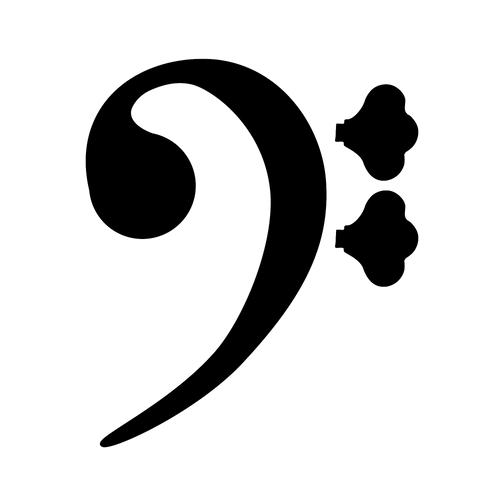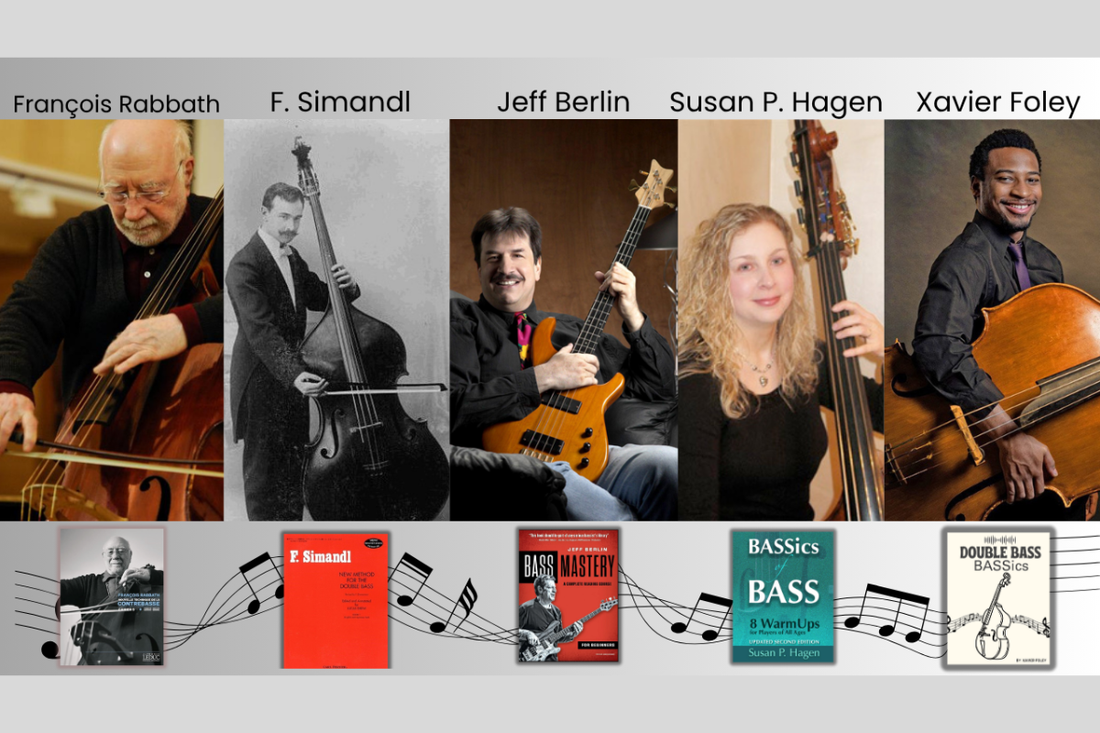Hey there. If you're serious about improving your double bass playing, you need good exercise books. Not just any books, but ones that give you a real foundation and help you grow as a musician.
I've spent years working through different methods, and I want to share five exercise books that could make a real difference in your practice routine. Some of these are classics that have been around for decades. Others offer fresh approaches to learning the instrument. And yes, one of them is mine, but I'll explain why I created it and how it fits into your learning journey.
1. Jeff Berlin: Bass Mastery - A Complete Reading Course
Now, this method was written primarily for electric bass, but here's the thing. The principles translate directly to the double bass. As a double bassist, you might find this book refreshing because it focuses purely on musicality and reading.
Jeff Berlin is a legendary electric bassist known for his jaw-dropping technique and advanced harmonic approaches. His Bass Mastery book brings a systematic approach to reading music on the bass.
The book contains over 100 exercises based on solid music theory concepts. Each lesson builds on the previous one to introduce increasingly sophisticated concepts and techniques. The etudes are grounded in common chord tonalities written in melodic form, all geared to teach when to play the right notes at the right time.
What makes this book special is the focus on reading. It requires players to find more accurate left-hand positions and fingerings to play the notes as they are written. This approach helps you polish your reading skills and technique at the same time.
Ready to improve your sight reading? Check out Jeff Berlin's Bass Mastery course and start building your reading skills today.
2. Susan P. Hagen: BASSics of Bass - 8 Warm Ups for Players of All Ages
Susan Hagen is the principal double bassist of the Boston Pops Esplanade Orchestra and a performer with the Boston Symphony Orchestra. She created this book based on warm-ups she's written for herself and students over many years (Her book is also the inspiration behind my Double Bass BASSics book).
The book takes you through a logical set of left-hand and right-hand warm-ups that will build your technique, improve your intonation, and increase your endurance. Warming up is a helpful and important way to prevent injuries, and these warm-ups help you work to build a healthy physical approach to the instrument.
This isn't a method book in the traditional sense. It's focused specifically on warming up before you practice or perform. Think of it as a routine that prepares your body and mind for serious playing.
The warm-ups are designed to build strength and endurance over time. Susan mentions she finds this to be a fun way to achieve that goal, which matters when you're trying to establish a consistent practice routine.
Who should use this book? Anyone who wants to develop a smart warm-up routine. If you're dealing with tension or fatigue when you play, these exercises might help you approach the instrument in a healthier way. If you're preparing for auditions or long practice sessions, having a structured warm-up becomes really important.
Want to play without tension and prevent injuries? Get Susan Hagen's BASSics of Bass warm-up routine and start building healthy technique.
3. F. Simandl: New Method for the Double Bass
This is the big one. The orange book. The method that's been the standard for over a century. I used Simandl personally, and most classical bassists have spent significant time with this book.
The Simandl Method features etudes as part of the program. These etudes cover the technical growth necessary for mastery of the double bass, covering all aspects of performance technique, including attack, bowing, mordents and trills, intonation, dexterity, legato/marcato, leaps, syncopation, cantilena playing, and more.
The book is 149 pages and includes both English and Japanese text. It has markings for bowings and fingerings throughout.
The Simandl New Method methodically takes the beginning double bass student up the fingerboard, half-step by half-step, exploring all of the notes in each position. The position system Simandl uses has become the standard way most classical bassists think about the fingerboard.
Now, I need to be honest about this method. You really need guidance from an experienced instructor to use this book properly.
The Simandl New Method teaches a bass player the necessary skills to play orchestral music. Those atonal, grinding exercises are actually exactly what bass players do in orchestra much of the time. Reading all of those accidentals across the strings is an essential skill for bass players in an ensemble.
The book has its critics. Some people find the exercises dry and unmusical. Others point out that bass pedagogy has evolved significantly since Simandl's time. But the fact remains that this method has produced countless professional bassists over more than 100 years.
Who should use this book? Classical bassists preparing for orchestral work, advanced students who want to master the traditional position system, and anyone who needs to develop strong reading skills across all positions of the fingerboard.
If you're a beginner, wait until you have some foundation before tackling Simandl. Work with a teacher who knows the method well. The exercises are challenging, and proper guidance makes all the difference.
Preparing for orchestral auditions? The Simandl New Method for Double Bass is the foundation you need. Find it at your local music shop or online.
4. François Rabbath: Nouvelle Technique De La Contrebasse
François Rabbath is a revolutionary figure in double bass history. Born in Syria in 1931, he's a virtuoso performer and composer who developed an entirely different approach to the instrument.
Rabbath's major contribution to the field of bass pedagogy is represented in the three-volume Nouvelle technique de la contrebasse. The main differences in Rabbath's approach from that of the double bass method of Franz Simandl is Rabbath's use of the left hand and his detailed attention to the bow arm.
In Simandl's system, the first position encompasses only a whole step. In Rabbath's method, the entire fingerboard is divided into only six positions, defined by the location of natural harmonics on the strings.
The key technique in Rabbath's method is called pivoting. A pivot is a rocking of the hand to reach a new note where the thumb remains stationary but all fingers gain the technical freedom to move anywhere else possible. This is different from shifting, where the entire hand moves.
Rabbath also uses something called the crab technique, named for the way the hand movement resembles a crab's sideways walking. These techniques allow you to navigate the fingerboard in ways that feel very different from traditional methods.
The method includes text in French, English, German, and Italian. Volume 1 is 28 pages and introduces the foundational concepts. The complete series spans multiple volumes, each building on the previous material.
Who should use this book? Bassists who want an alternative to the Simandl approach. Players interested in solo and contemporary music. Anyone curious about expanding their technical possibilities on the instrument.
The comfort of navigating the fingerboard and the flat position hierarchy taught by approaches like Rabbath means no position is scarier than any other. This psychological shift helps many students approach the instrument with more confidence.
Some teachers combine the Rabbath and Simandl methods. They use Rabbath for beginners and intermediate students to build comfort with the fingerboard, then introduce Simandl for advanced orchestral preparation.
Want to explore a revolutionary approach to the double bass? Get François Rabbath's Nouvelle Technique and expand your technical possibilities.
5. Xavier Foley: The Double Bass BASSics
Now let me tell you about my own book, and why I created it.
The point of my exercises is to encourage double bass practice with fun, short pieces. I noticed that many exercise books, while technically valuable, weren't always enjoyable to practice. The students would work through them because they had to, not because they wanted to.
My Double Bass BASSics Book is designed for beginners playing in first to third position. No thumb position needed. The pieces are simple, fun, and cover styles.
What makes this book different from the others on this list? It's about making practice enjoyable. The exercises are short enough that you don't feel overwhelmed, but musical enough that you're actually playing pieces, not just technical drills.
The exercises stay in accessible positions. You're not jumping all over the fingerboard or dealing with thumb position. This lets you focus on developing good tone, solid intonation, and musical phrasing without getting overwhelmed by complex technical demands.
I wrote these pieces to be easier than my Exercise Book, which sometimes goes into thumb position. If you're just starting out or teaching a beginner, the BASSics Book gives you material that's immediately playable and musically satisfying.
The book works well alongside other methods. You might work through Simandl or Rabbath for technical development, then use my pieces for musicality and enjoyment. Or you might start with my book to build confidence and love for the instrument before diving into more demanding methods.
Your practice time is valuable. Invest it wisely in materials that move you forward and keep you engaged with the instrument you love.
Ready to make practice fun? Get the Double Bass BASSics Book as a PDF. When you purchase the book, you get FREE lifetime updates whenever I release new beginner pieces. As I create more material, you get access to it automatically.
Purchase now and receive your download link via email. Start enjoying your practice sessions today!

